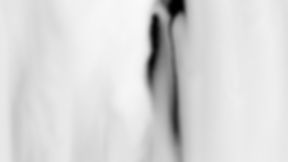Lucas Gassel. His oeuvre has certainly been overlooked for a long time and it is only recently that he receives the deserved attention and recognition as a master painter. His paintings are to be found all over the world and make part out of museums and private collections, unfortunately rarely exhibited and most of the time stored in depots. Regrettably, Gassel has been undermined as a painter and his style compared to that of his contemporary comrades. Up till recently there has been very less research done about him as a painter and about the significance of his art works.
Due to the complex relation between the multi-layered elements of his landscapes, we can certainly state that Lucas Gassel had a profound knowledge of the Bible and the Greek mythology. Nothing is coincidental, all characters and events correlate and intertwine to each other and not only enhance but also support the main narrative of his paintings. Any analysis of his landscapes requires an in-depth research of these multi-layered elements and consequently determining their function and relation to the main story of the painting.
Being aware of these distinctive characteristics of Gassel’s paintings, and being acquainted with the story in the Bible (Luke 24:13-35) I started researching the interrelation between the narrative and the elements present in the painting Landschap met de Emmaüsgangers. To my surprise, I could not find the usual unity that is always present in Gassel’s painting composition.
Apart from the group of men walking on top of the bridge, which seemed to represent the walk that Jesus had together with Cleopas and Simon on their way to Emmaus - no further scenes nor subjects can be found that germinate the development of the story. Why would Gassel depict the same scene twice? Why do the frontal subjects seem to be fighting?
In his paintings Gassel depicts different scenes from one story, he does not repeat, or at times combines different stories, take for example the integration of Tobias and Raphael in his painting Jesus heals a blind man or David and Bathsheba in his painting The return of the lost son. Could it be that in this painting Gassel intended to portray a different story and the background scene was meant as to enhance the story behind it - just like what happens in other paintings?
The elements do not unify the story of the painting and there is something strange about the frontal group of men that seemed to have a dispute. It is obvious that Gassel depicts here a violente scene, unlike the biblical story On the Road to Emmaus that is about a peaceful and enlightening walk with Jesus.
Furthermore, no violence is to be found in any other paintings from his contemporary comrades that portray this same story in their paintings. Something was dubious about the painting, the elements did not correlate to each other and the scene was displace from its original context. After researching the Bible I was surprised to discover that everything was pointing towards a different Biblical story namely, The plot against Joseph, this story seemed to be coherent with the whole content of the painting. Not only it explained the reason why the main frontal group of men had a dispute but it also proved the connection of the other elements with the narrative of the story and the reason why Jesus was depicted in the background on his way to Emmaus.
In this research I argue that the theme of the painting Landschap met de Emmaüsgangers is inaccurate and that in fact, in this painting Gassel intended to portray a different Biblical account namely, The plot against Joseph.




